What are driver assistance systems and how do they work?
Driver assistance systems are like the unsung heroes of modern vehicles. These tech-savvy systems are designed to prevent accidents by alerting the driver to potential hazards, or even taking control to avoid crashes. While your driving skills are crucial, these systems provide an extra safety net that makes roads safer for everyone.
The systems use sensors, cameras, and radars to monitor your surroundings, constantly collecting data to help make split-second decisions. Imagine driving a BMW 3 Series that warns you about an impending collision or keeps you in your lane during those long motorway drives.
These systems have been around since the early 2010s and continue to evolve as car manufacturers push the envelope on safety. They’re a testament to how far technology has come in making driving more secure and enjoyable.
What is automatic emergency braking and why is it crucial?
Automatic emergency braking (AEB) is the knight in shining armour you didn’t know you had. This system can sense an impending collision and apply brakes autonomously if you don’t react in time.
There are several types of AEB systems. Basic ones work well in stop-start traffic, detecting stationary vehicles ahead. More advanced systems operate at higher speeds and can detect pedestrians or cyclists.
This technology is so effective that experts compare it to the significance of seat belts. AEB can drastically reduce the severity of accidents, making it a must-have feature.
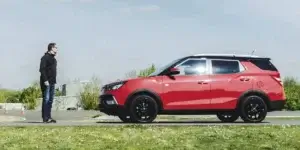
How does active cruise control enhance your driving experience?
Active cruise control (ACC) takes the traditional cruise control system up a notch. It maintains a set speed, but also adapts to traffic conditions, slowing down or speeding up based on the distance from the car in front. It’s like having a conversation with your car, where it understands when to give the brakes a little nudge.
Picture this scenario: you’re cruising in a Mercedes-Benz E-Class and hit a patch of slow-moving traffic. Instead of constantly changing your speed, ACC handles it for you. It’s a blessing during long commutes and on motorways.
Advanced ACC systems even manage stop-start traffic, coming to a complete stop and getting back up to speed without manual input.
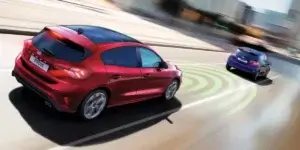
What is lane-keeping assist and how does it prevent accidents?
Lane-keeping assist is your car whispering, “Stay in your lane!” It’s designed to help drivers avoid unintentional lane departures—a vital feature for those who love long road trips or late-night drives. Your car will feel like it’s gently guiding you back on track when it senses you’re drifting.
This system uses cameras to detect lane markings and provides alerts if you start wandering without indicating. Some cars vibrate the steering wheel, others flash warnings on the dashboard, and some even apply gentle steering corrections. It’s like the reassuring hand of a co-driver keeping you focused.
Lane-keeping assist ensures you remain safely on course, reducing the risk of side collisions.

What is traffic-jam assist and why is it beneficial?
Traffic-jam assist is the hero you never knew you needed during those rush-hour grinds. Imagine your car taking over in low-speed traffic, handling the stop-start routines while keeping your focus on the road ahead.
This feature works by combining active cruise control and lane-keeping assist, allowing the car to steer, accelerate, and brake autonomously in slow-moving traffic.
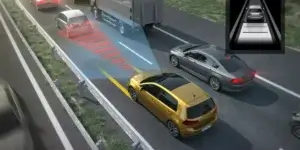
How does blind-spot help keep you safe?
Blind-spot assist acts like a second pair of eyes, alerting you to vehicles lurking in those hard-to-see areas. If you’ve ever tried changing lanes, only to miss a sneaky car in your blind spot, you’ll appreciate this feature.
Using sensors, blind-spot assist warns you of cars in adjacent lanes that might not appear in your mirrors. Typically, an amber light illuminates on your side mirror. If you signal to change lanes without realising a vehicle is there, an alarm sounds, like a friendly nudge saying, “Hold on a second!”

What is rear cross-traffic alert and how does it help?
Rear cross-traffic alert is like a digital guardian angel when reversing out of tricky spots. It warns you of approaching vehicles or pedestrians, ensuring you don’t have any unexpected surprises. Imagine backing out of a crowded car park in your car and being alerted to a cyclist zooming past behind you.
This system uses sensors to detect oncoming traffic at the back of your vehicle. If something’s coming your way, an alarm sounds or a visual alert pops up on your screen.

What is hill-start assist and why is it useful?
Hill-start assist is the best friend you never knew you needed when facing a steep incline. If you’ve experienced the anxiety of rolling back in your car while transitioning from brake to accelerator, this feature is a lifesaver.
The system temporarily holds the brakes when you switch your foot from brake to throttle. It ensures you don’t roll back, providing the confidence you need to tackle hills effortlessly. It’s like having an invisible hand holding your car in place until you’re ready to move.
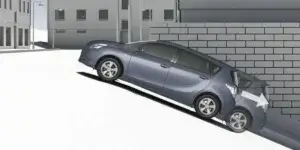
What are active headlights and how do they enhance visibility?
Active headlights illuminate the path ahead, adjusting automatically to provide optimal visibility. Imagine driving your car on a pitch-black road, and the lights adapt seamlessly to the surroundings, ensuring maximum clarity without blinding other drivers.
These headlights intelligently alternate between high and low beams based on traffic conditions. More advanced systems can even redirect or dim specific sections of the beam to avoid dazzling oncoming drivers.

What is road-sign recognition and why should you care?
Road-sign recognition acts like a vigilant co-driver, ensuring you never miss important signage. Using cameras, this system detects and interprets road signs, displaying them on your car’s digital interface.

What is intelligent speed assist and how does it enhance safety?
Intelligent speed assist (ISA) is like having a voice of reason sitting on the passenger seat, reminding you not to exceed speed limits. This system uses road-sign recognition and GPS data to monitor speed limits and alert you if you go over them. In some cases, it even restricts your car’s speed, keeping you compliant.

What is driver-attention detection and why is it vital?
Driver-attention detection is your vehicle’s way of checking in, ensuring you’re focused and alert. It monitors your head and eye movements, detecting signs of inattention or fatigue. If it senses you’re dozing off while driving your car, it gently prompts you to take a break.
This system provides alerts if it detects you’re distracted, using audible warnings or visual cues on the dashboard.
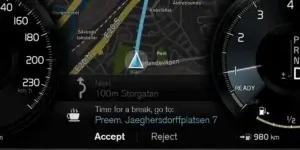
Final Thoughts
Advanced driver assistance systems (ADAS) are the unsung heroes, making our roads safer. From automatic emergency braking to intelligent speed assist, these systems elevate driving safety and comfort.
Understanding and utilising these systems can transform your driving experience, making each trip not only safer, but more enjoyable. If you want to explore more about car features and safety, consider visiting MOTORS. Stay informed, drive safely, and enjoy the open road!


